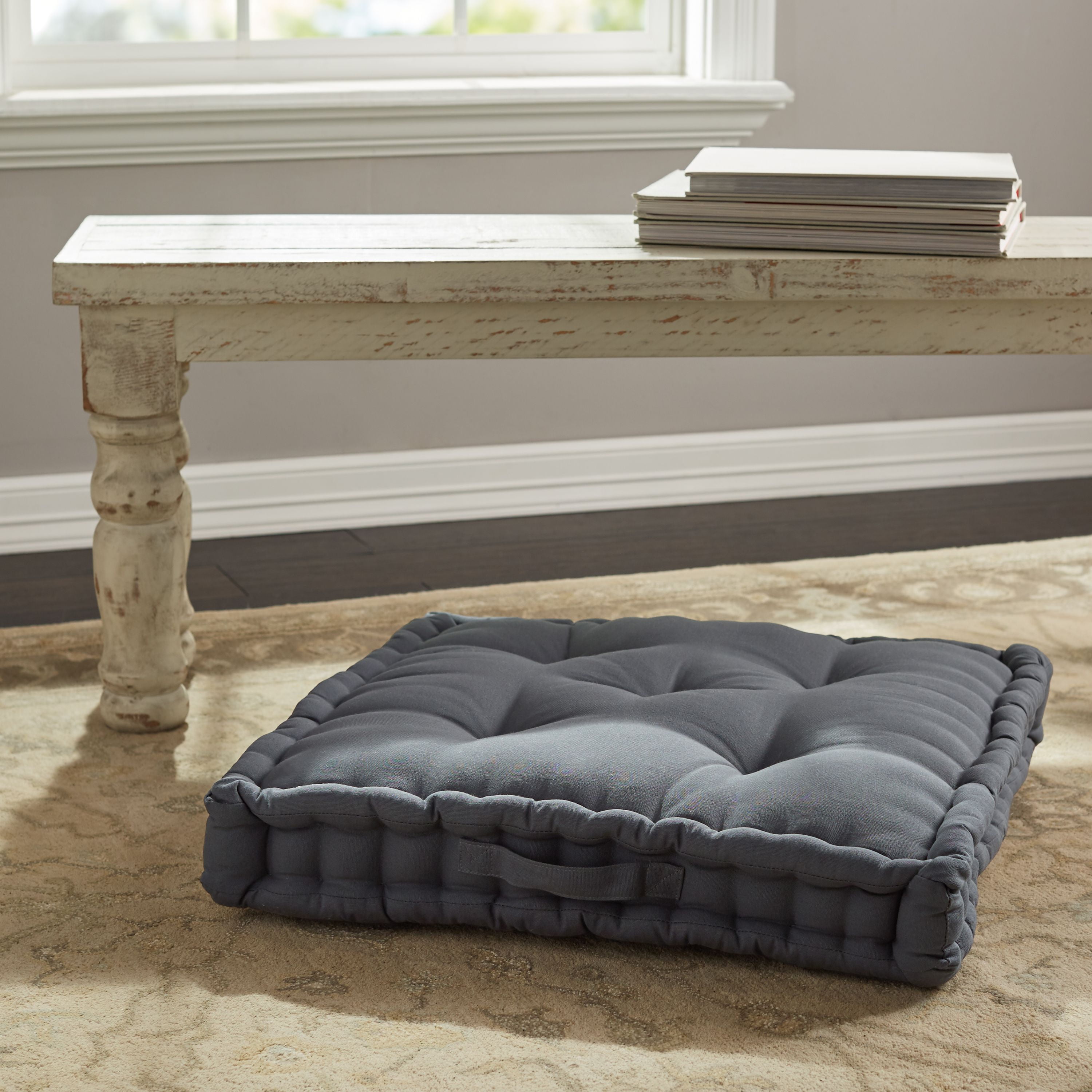Types of Floor Chairs: Best Chair For Sitting On Floor

Choosing the right floor chair can seriously elevate your chill sesh, whether you’re deep in a Netflix binge or finding your inner zen. From comfy cushions to supportive kneeling chairs, there’s a perfect floor buddy for everyone. Let’s dive into the options and find your match!
Floor Chair Types Comparison
Understanding the differences between various floor chair types is key to finding the perfect fit for your needs and lifestyle. The table below provides a detailed comparison of four popular options: low seating, meditation cushions, floor poufs, and kneeling chairs.
| Type | Material | Comfort | Support | Intended Use |
|---|---|---|---|---|
| Low Seating (e.g., floor benches) | Wood, upholstered fabric, rattan | Moderate to high, depending on cushioning | Good back support, can be firm | Relaxing, reading, casual gatherings |
| Meditation Cushions (Zabuton & Zafu) | Buckwheat hulls, cotton, kapok | Moderate, conforms to body shape | Good posture support for meditation | Meditation, yoga, floor sitting |
| Floor Poufs | Fabric, foam, beads | High, soft and yielding | Minimal back support | Relaxing, casual seating, footrest |
| Kneeling Chairs | Wood, padded cushions | Variable, can be initially uncomfortable | Excellent posture support, encourages upright sitting | Improved posture, prolonged floor sitting, work |
Ergonomic Benefits and Drawbacks of Floor Chairs
The ergonomic aspects of floor chairs significantly impact posture and back health. Careful consideration of these factors is crucial for selecting the appropriate chair.
Best chair for sitting on floor – Below is a summary of the ergonomic benefits and drawbacks for each type of floor chair:
- Low Seating:
- Benefits: Provides good back support if properly designed; allows for a relatively natural sitting posture.
- Drawbacks: Can be too low for some individuals; may not offer enough support for extended periods.
- Meditation Cushions:
- Benefits: Encourages good posture for meditation; promotes stability and balance.
- Drawbacks: Limited back support; may not be suitable for all body types or extended periods of sitting.
- Floor Poufs:
- Benefits: Extremely comfortable for short periods; versatile and portable.
- Drawbacks: Offers minimal to no back support; not ideal for extended periods of sitting; can encourage slouching.
- Kneeling Chairs:
- Benefits: Excellent posture support; encourages an upright sitting position; alleviates pressure on the lower back.
- Drawbacks: Can be initially uncomfortable; may require an adjustment period; not suitable for everyone (e.g., those with knee problems).
Ideal Posture for Each Floor Chair Type
Visualizing the correct posture for each chair type is essential for maximizing comfort and minimizing strain.
Descriptions of ideal posture for each chair type:
- Low Seating: Imagine sitting upright with your back comfortably resting against the back support, knees bent at a 90-degree angle or slightly less, and feet flat on the floor. Your spine should maintain its natural curvature.
- Meditation Cushions: Picture a straight spine, sitting tall with your shoulders relaxed and your chin slightly tucked. Your hips should be slightly higher than your knees.
- Floor Poufs: While a pouf doesn’t offer much postural support, aim for a relaxed but upright posture, avoiding slumping. Support your back with pillows if needed.
- Kneeling Chairs: Visualize a posture with your hips slightly higher than your knees, your thighs angled downwards, and your back straight. Your weight should be distributed evenly between your knees and shins.
Maintaining and Caring for Your Floor Chair

Maintaining your floor chair is key to enjoying it for years to come. Proper care depends largely on the material your chair is made from. Different materials require different cleaning methods to prevent damage and maintain their appearance. Neglecting this can lead to premature wear and tear, so let’s dive into the best practices.
Cleaning and Maintaining Different Floor Chair Materials, Best chair for sitting on floor
Proper cleaning techniques are crucial for extending the life of your floor chair. The following table Artikels specific care instructions for common floor chair materials.
| Material | Cleaning Instructions |
|---|---|
| Fabric | Regular vacuuming with a soft brush attachment removes dust and debris. For stains, spot clean with a mild detergent and water solution, blotting gently. Avoid rubbing, which can spread the stain. Air dry completely. For more stubborn stains, consider professional cleaning. |
| Leather | Wipe down regularly with a damp, soft cloth. Use a leather conditioner every few months to keep it supple and prevent cracking. Avoid harsh chemicals and abrasive cleaners. For spills, blot immediately with a clean cloth. |
| Wood | Dust regularly with a soft cloth. Use a wood polish or cleaner specifically designed for the type of wood your chair is made from. Avoid excessive moisture, which can damage the wood. For stubborn marks, try a paste of baking soda and water, gently rubbing with a soft cloth. |
Extending the Lifespan of Your Floor Chair
Proper storage and care significantly impact the longevity of your floor chair. Following these steps will help ensure your chair remains in excellent condition for years.
These simple steps can significantly extend the life of your floor chair.
- Avoid placing your floor chair in direct sunlight or near heat sources, as this can cause fading and damage to the materials.
- When not in use, store your chair in a cool, dry place to prevent moisture damage and mildew.
- Regularly inspect your chair for any signs of wear and tear, addressing minor issues promptly to prevent them from becoming major problems.
- Use protective covers or cushions to shield your chair from scratches and spills, especially if it’s made of delicate materials.
- Avoid overloading your floor chair, as this can put undue stress on its structure and lead to damage.
